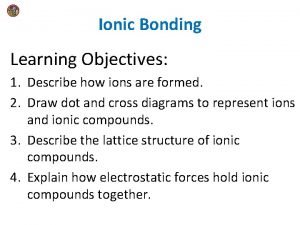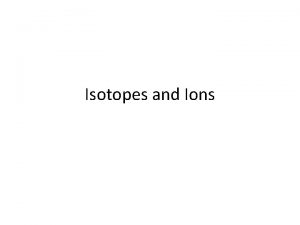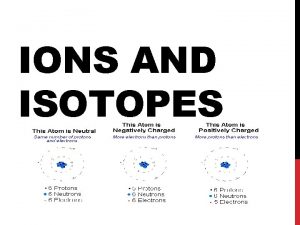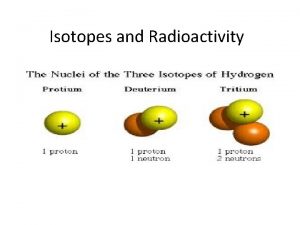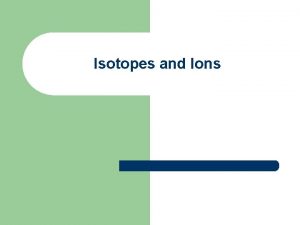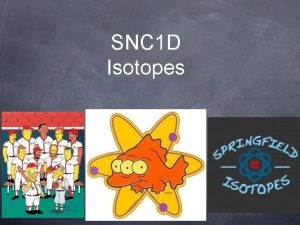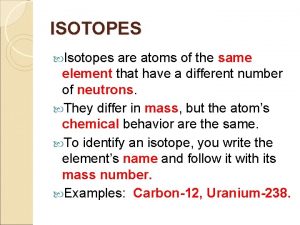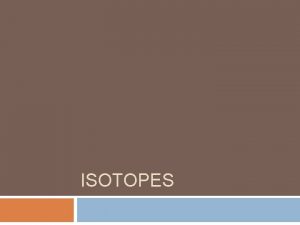Isotopes and Ions Isotopes atoms of the same










- Slides: 10

Isotopes and Ions

Isotopes: atoms of the same element that have different numbers of neutrons Two isotopes of an element will have the same atomic number, but different mass numbers (and atomic masses) CARBON (above right) 1. What is the mass number to the left? 2. What is the mass number to the right? 3. What is the atomic number to the left? 4. What is the atomic number to the right?

Isotope Example So, which of the following represent isotopes of the same element? #1 234 92 #2 X #3 234 93 X #4 235 92 X 238 92 Which element are these isotopes of? X

Isotope Notation Write the symbol with the mass number on top and the atomic number on the bottom Example:

Isotope Example Naturally occurring carbon consists of three isotopes, 14 N, 15 N, and 16 N. State the number of protons, neutrons, and electrons in each of these carbon atoms. 14 N 7 15 N 7 16 N 7 #P _______ #N _______ #E _______

Ions IONS are charged atoms (or groups of atoms) that have a positive or negative charge. Ions differ in the number of electrons For Neutral Atoms : Number of electrons = number of protons For Ions : protons the same, electrons are different Either lost or gained electrons Examples: Neutral Atom: Na, Ca, I, O Ion: Na+ Ca+2 I- O-2

IONS Taking away an electron from an atom gives a positive charge because there are now more protons Called a CATION So if the Mg atom to the right loses 2 electrons, it becomes Mg 2+

IONS Adding an electron to an atom gives a negative charge because there are now more electrons Called an ANION So if the F atom to the right gains 1 electron, it becomes F-

Ion Practice State the number of protons, neutrons, and electrons in each of these ions. 39 K+ 19 #p+ ______ 16 O -2 41 Ca +2 8 20 _______ #no _______ #e- _______

 Atoms and their isotopes pogil
Atoms and their isotopes pogil What do the roman numerals in a cation's name indicate?
What do the roman numerals in a cation's name indicate? Ion chapter 11
Ion chapter 11 Atoms molecules and ions
Atoms molecules and ions Atoms molecules and ions
Atoms molecules and ions Atoms molecules and ions
Atoms molecules and ions Atoms ions and molecules
Atoms ions and molecules Atoms ions and molecules
Atoms ions and molecules States that atoms ions and molecules must collide to react
States that atoms ions and molecules must collide to react Chapter 2 atoms molecules and ions
Chapter 2 atoms molecules and ions Magnesium and fluorine ionic compound
Magnesium and fluorine ionic compound










